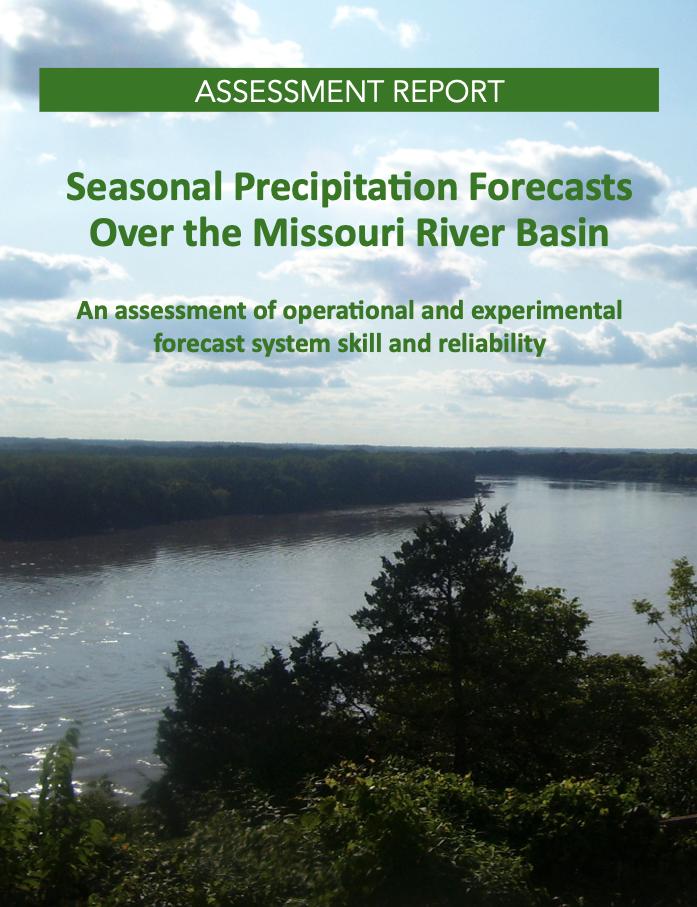Seasonal Precipitation Forecasts Over the Missouri River Basin: An assessment of operational and experimental forecast system skill and reliability
In 2011, the Missouri River Basin experienced devastating flooding, which caused significant property loss and disrupted thousands of lives. In 2012, the basin experienced extreme drought that impacted water supplies and downstream navigation. Historically, the climate of this region shows a general tendency for both very wet and very dry months in a given year. The ability to accurately predict seasonal flood and drought conditions between one and six months in advance was recognized to be extremely beneficial to water managers, emergency personnel, as well as the general public for planning purposes.
The NOAA Earth System Research Laboratory and the University of Colorado’s Cooperative Institute for Research in Environmental Sciences (CIRES) have performed an assessment study to determine the skill and reliability of current state-of-the-art operational and experimental seasonal forecast systems in predicting the atmospheric conditions that led to the 2011 flood or the 2012 drought. For the study, NOAA operational and experimental modeling systems were analyzed for December 2010 precipitation forecasts for the winter (January-February-March) and spring (April-May-June) of 2011. Likewise, December 2011 precipitation forecasts for 2012 winter and spring were analyzed. These ‘retrospective’ forecasts were compared to actual observations for just the Upper Missouri River Basin, for just the Lower Missouri River Basin, and for the entire Missouri River Basin.




